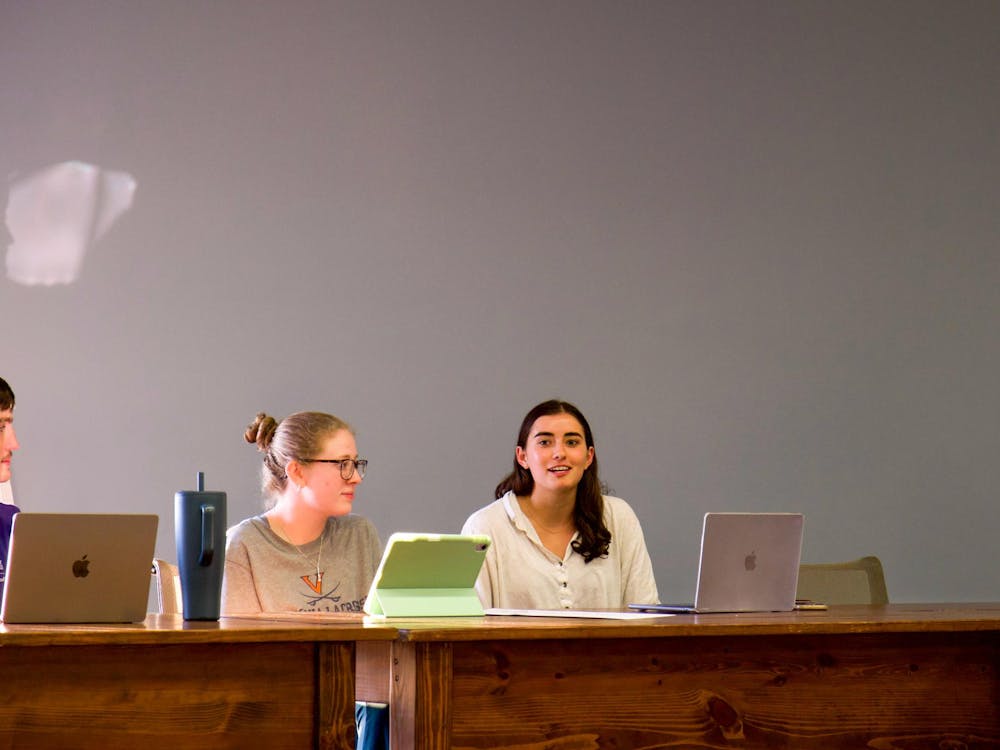More than three decades ago, a Student Council president named Larry J. Sabato, along with other University students, began calling for the creation of a student position on the Board of Visitors. In 1983, that position became a reality and now, 25 years later, the student member continues to serve as one of the most important outlets for the Board when attempting to gauge students' opinions.
Student Council began pushing for a student member on the Board during the 1970s, said Sabato -- now a University politics professor -- after growing concern that the Board did not hear or consider students' voices.
"Students back in the late 1960s and early 1970s began to agitate for the addition of a student member to the Board of Visitors," Sabato said. "That was a time of tremendous student activism; students believed their views and opinions about University issues, and also broader issues, such as the war in Vietnam, were not being well represented on the Board of Visitors."
Though pressure to create the position began in the 1970s, the position did not formally come into being until 1983. Board of Visitors Secretary Sandy Gilliam said the creation of the position was delayed both because state authorities first had to approve it and because it met much initial opposition.
"To have a student on the Board meant that the Code of Virginia, the body of state law, had to be changed," Gilliam said. "It wasn't anything the Board or the president here could do."
Gilliam said students, however, were ultimately successful in getting the law changed in 1983.
"The law was changed to read that the Board of Visitors of state institutions may appoint a non-voting student member," Gilliam said. Some years later, Gilliam noted, the law was changed again, requiring Virginia schools to appoint a non-voting student member.
Gilliam said the University was quick to apply the changed law and appoint a non-voting member to the Board.
"We were the first school to appoint a student member," Gilliam said. We "did it as soon as the law went into effect. We were the first school to give the student member all the rights and privileges of a full board member except the vote."
State law prohibits giving a student member the right to vote, Gilliam noted.
Sabato said even though the law was adopted, some difficulties remained at the time, such as reaching a compromise about how the student would be chosen.
"We got to the point where the student could be appointed," Sabato said. "But the compromise was that instead of having a student body-wide election for the position or having the student appointed by, say, Student Council, the Board of Visitors would get to pick that student member."
According to Gilliam, after the second or third year of the position's existence, the student Board member was treated like any other member and was allowed to sit it on closed, executive meetings. Gilliam noted that the member's responsibilities have not changed much since then, but added that some student members have been more successful than others.
Some student members "have been very, very good, most have been good and there were some that weren't good," Gilliam said. A student member's success "depends largely on the relationships that the student member has with members on the Board and if [the Board members] have confidence in the student."
Gilliam said the student member is "above all, a resource for the Board," adding that student members have had success in the past raising issues of student concern such as class size, ability to get into required classes and glitches in the class registration system.
Though the student Board member's role has changed little in the past couple decades, current student Board member Carey Mignerey said he believes the position is effective. Mignerey added that he believes the process by which the member is selected should not be changed. Having an election for the position would not be desirable, he said, because the student member should not have a specific agenda.
"It's unclear that the student member would be any more effective if he had a plurality or 51 percent of the student vote," Mignerey said. "There are student viewpoints from student groups that may not prevail in a general election, such as minority students and graduate students."
Incoming student member Adom Getachew said a successful student Board member should be able to reach out to different groups in the University community and be aware of students' thoughts on various issues.
The position is effective "if the student body knows who the student member is and feels like they can reach out to that member," Getachew said. "And also if the student member is receptive and connected to the community."
Gilliam said once in a while there has been talk of giving the student member the ability to vote on Board issues; however, Gilliam said, that discussion has not arisen for a number of years.
Getachew added that she does not believe giving the student member the capacity to vote would be particularly beneficial for any party.
"There are certain issues that I wouldn't have the knowledge or the capacity to vote on," Getachew said, citing University investment policies that do not directly impact students. "I don't think the vote would necessarily enhance this position in any way"






